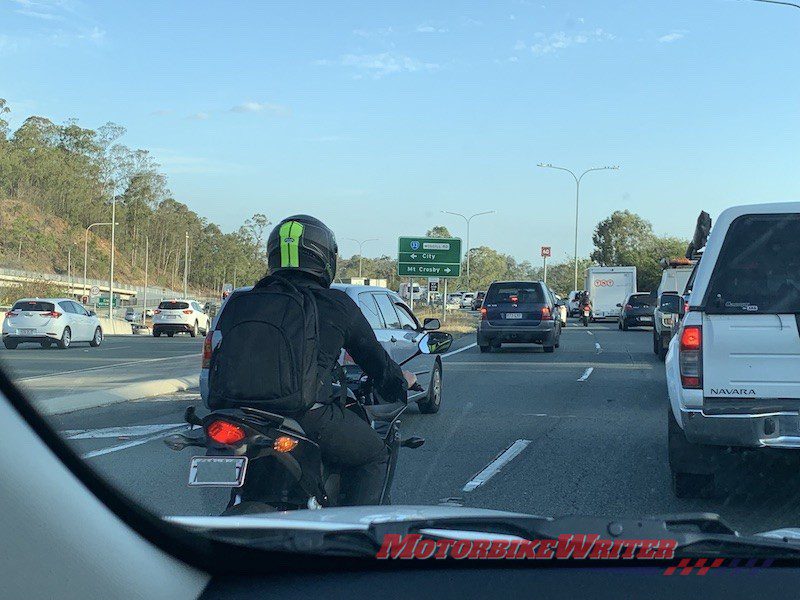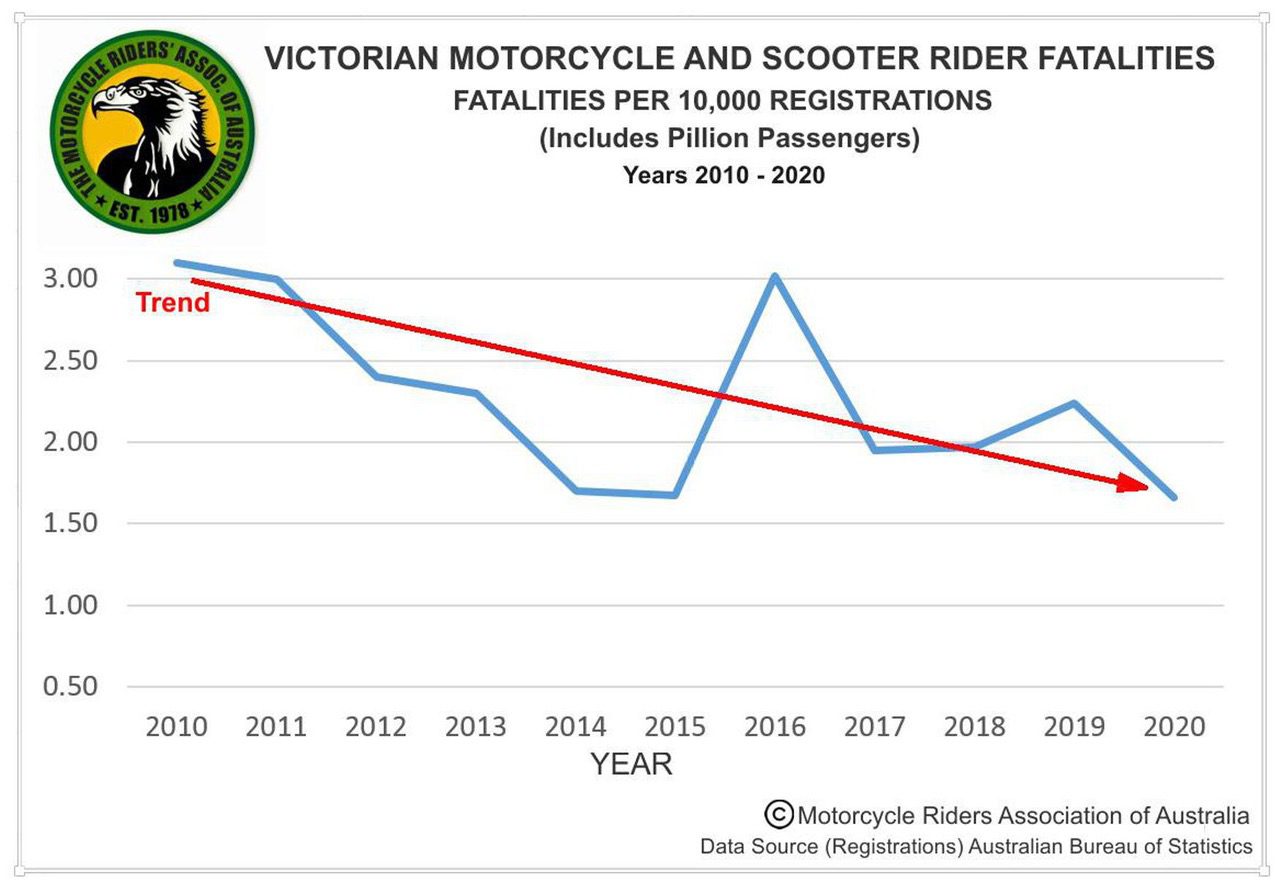A rider representative group fears that a Victorian Road Toll Increase Inquiry (RTII) report will vilify riders with inaccurate representations of the danger of riding.
This follows recent police media reports in most states that point out the increase in rider deaths this year but have so far failed to acknowledge the dramatic rise in new and used motorcycle sales in the past year.
The Motorcycle Riders Association of Australia has issued the graph below based on Australian Bureau of Statistics and Bureau of Infrastructure and Transport Research Economics data which shows motorcycle and scooter fatalities decreasing over the past 10 years.
The RTII report and recommendations to be tabled on Thursday, March 25, 2021, are expected to present “rubbery figures … obviously put together by non-riders”.
The report will available by clicking here on Thursday.
An MRAQ press release says the Traffic Accident Commission has been reporting that riders make up 1% of road traffic but 19% of all road user deaths.
However, in 2020 there were 5,119,560 vehicles registered in Australia, of which 198,151 were motorcycles. That’s actually 3.87% nationally and climbing given the 22.1% increase in motorcycle and scooter sales last year.
At the same time, new car sales were down 20.5%.
And with second-hand motorcycle sales not included in the data, the rider proportion could be much higher.
Deakin University motorcycle safety researcher Dr Liz de Rome has been claiming for years that motorcycles make up about 4% of motor vehicles.
If you count unregistered motorcycles, the percentage of motorcycles in traffic must be higher. “TAC figures are unreliable,” the MRAQ says.
“TAC figures make riding motorcycles look more dangerous than it is.
“These rubbery figures may mean the people putting them together are incompetent, or it may be the anti motorcycle culture in road authorities showing itself.
“No system develops reliable countermeasures to road trauma without reliable traffic/crash data.
“RSV/TACs use of rubbery figures to justify spending and policies that have speed limits reduced and costly wire rope barriers installed while roads are dangerously neglected.”




